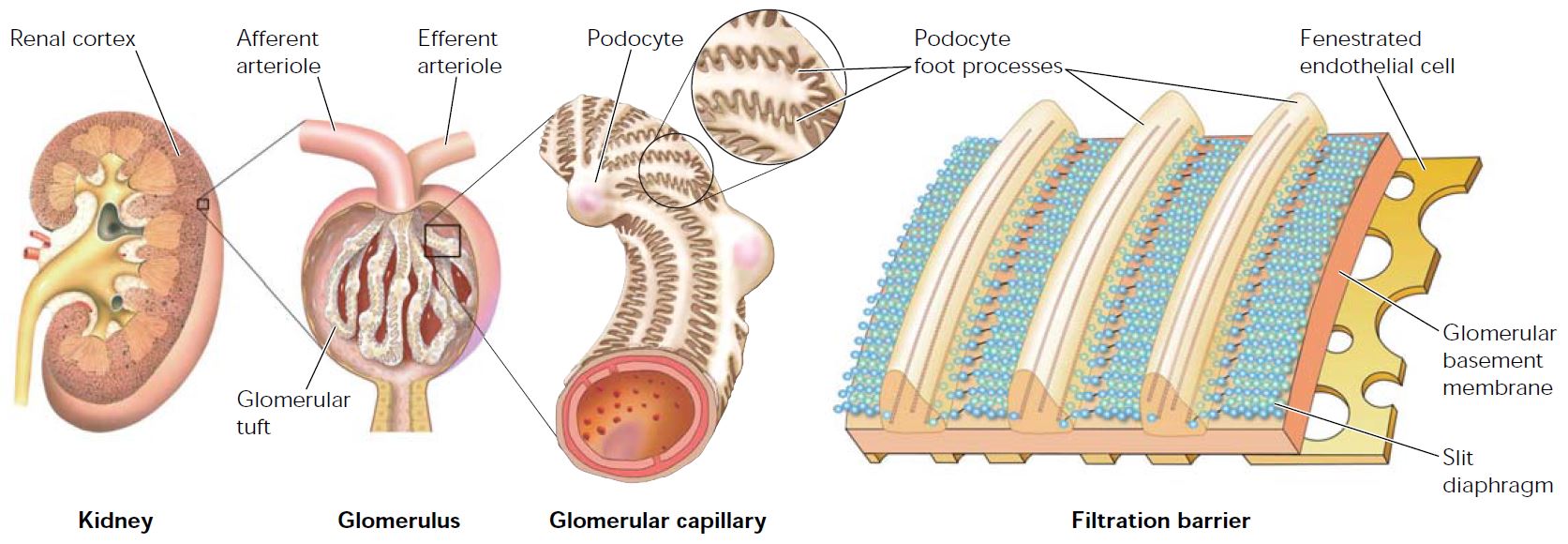Glomerulusnøstet suffused with blood via a supplying (afferent) arteriole. The blood is collected again in the fraførende (efferent) arteriole before a new capillary forming peritubulære capillaries including vasa recta.
Filtration of blood in the glomerulus is controlled by Starling forces where the sum of hydrostatic and oncotic pressure differences between capillaries and Bowman room controls fluid flow from the bloodstream into tubulisystemet. Filtrasjonsbarrieren lets water and smaller particles are filtered freely, while larger proteins and blood cells retained in the bloodstream. Filtrasjonsbarrieren consists of three layers: fenestrated endothelium, the basement membrane and an epithelial layer against Bowmans cavity defined by podocytter. Kapillærslyngene in the glomerulus is held together by mesangial areas consists of fibroblasts and connective tissue. Glomerulus perimeter defined by Bowmans capsule. Renal blood flow and glomerular pressure is normally closely regulated by the organism through auto regulation and tubuloglomerulær feedback. This ensures a stable glomerular filtration rate under different physiological conditions.
Disease processes affecting glomeruli could affect filtrasjonsbarrierens properties and glomerular filtration rate. As a rule, due to glomerular disease processes primary autoimmune mechanisms or as part of system diseases. It is important to note that glomerular diseases leading to secondary tubulo-interstitial changes in the same manner as in disease processes tubules will affect the function and structure of the glomeruli. In a chronic end stage renal disease will all be present glomerulosclerosis, interstitial fibrosis and tubulusatrofi. The patient gets contracted kidney and the original disease process can no longer be identified.
Proteinuria with or without hematuria are early discoveries that will lead to the suspicion that there may be glomerular disease. Early diagnosis with adequate measures are important to limit nefrontap and development of renal failure.

Tryggvason K, Wartiovaara J. How Does the Kidney Filter Plasma? Physiology 2005; 20 (2): 96-101. Http://physiologyonline.physiology.org/content/20/2/96
Reprinted by permission of the American Physiological Society. :